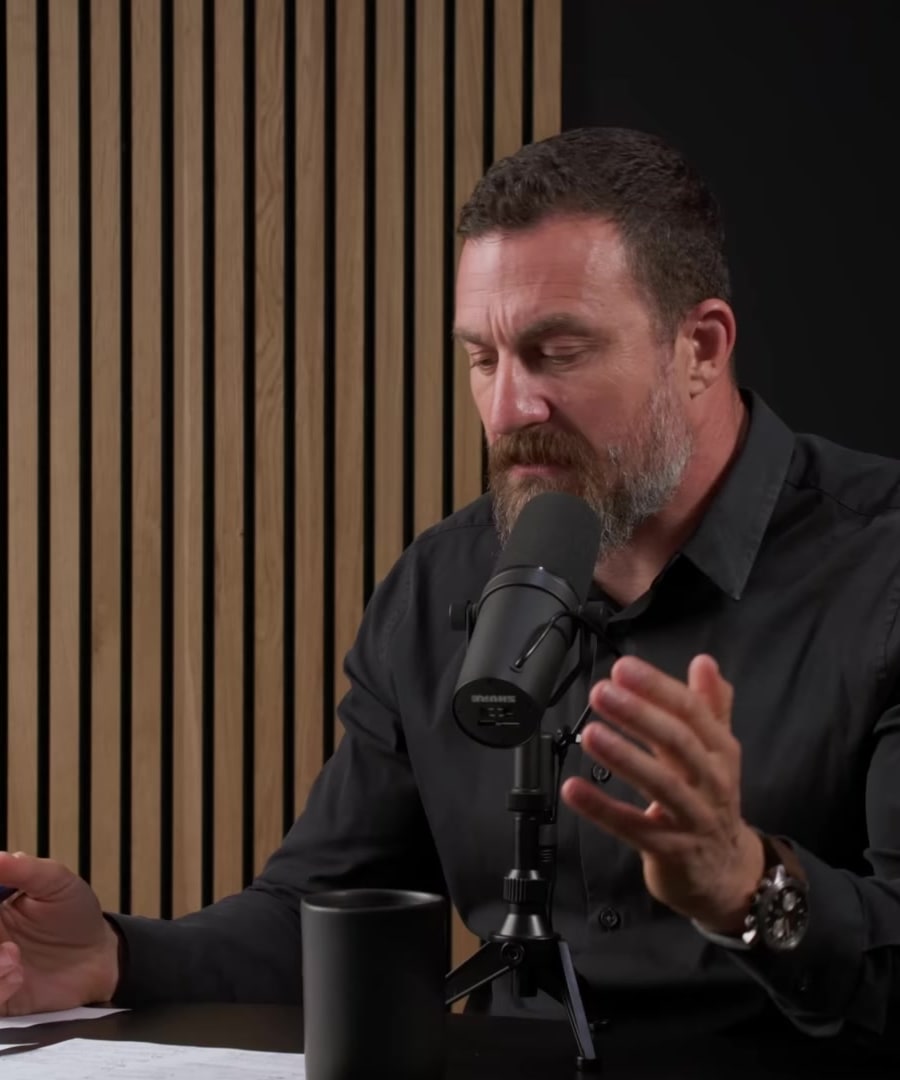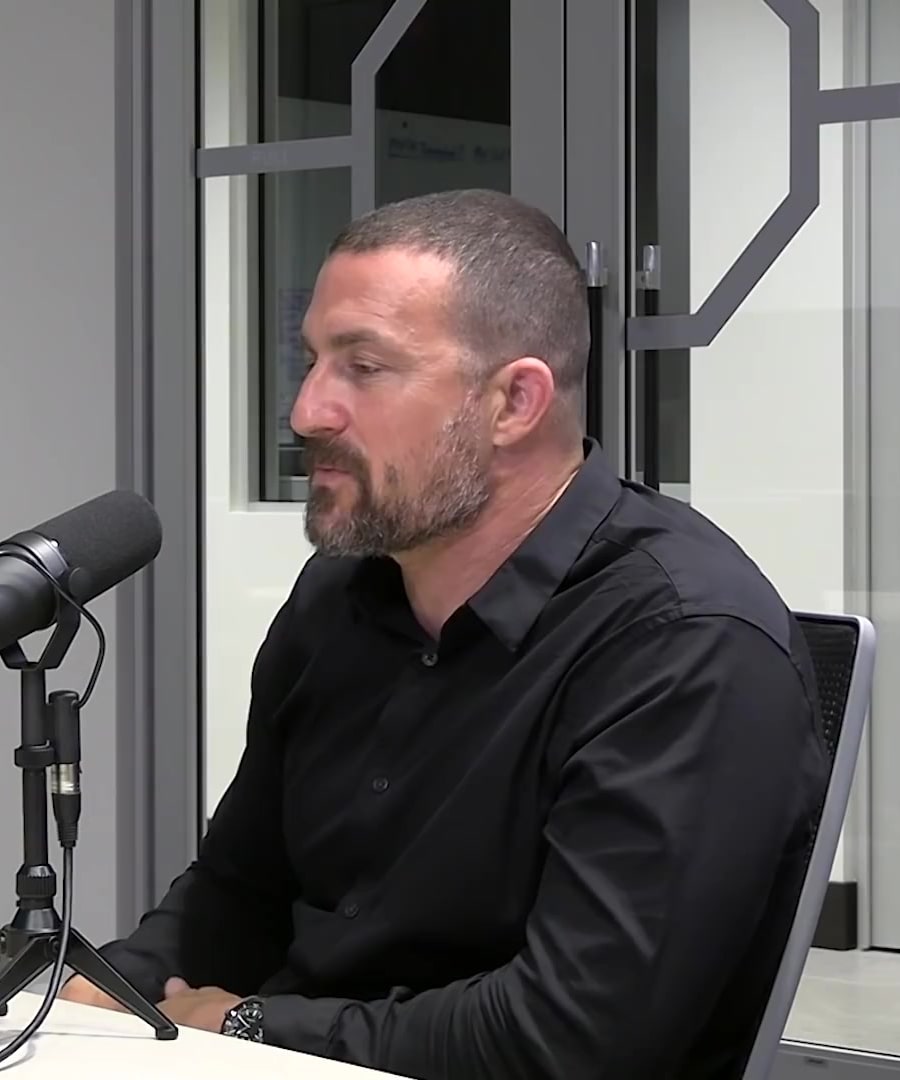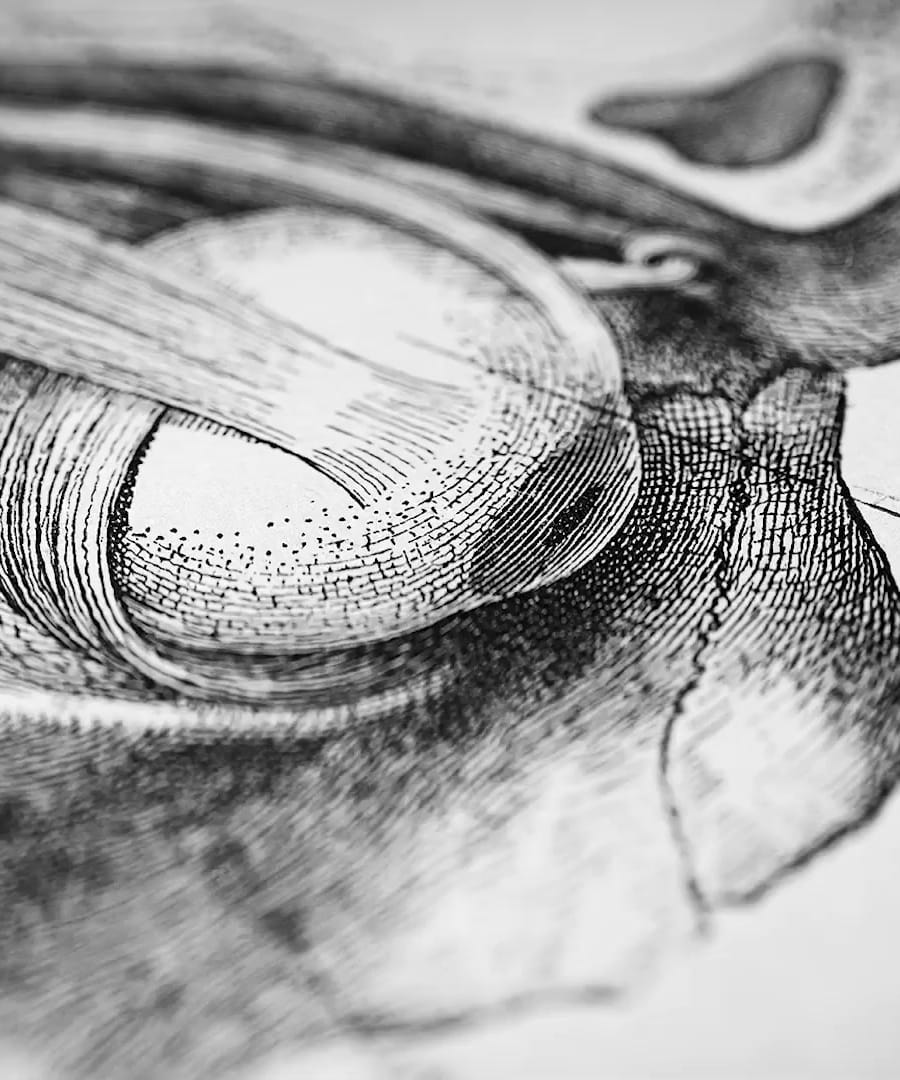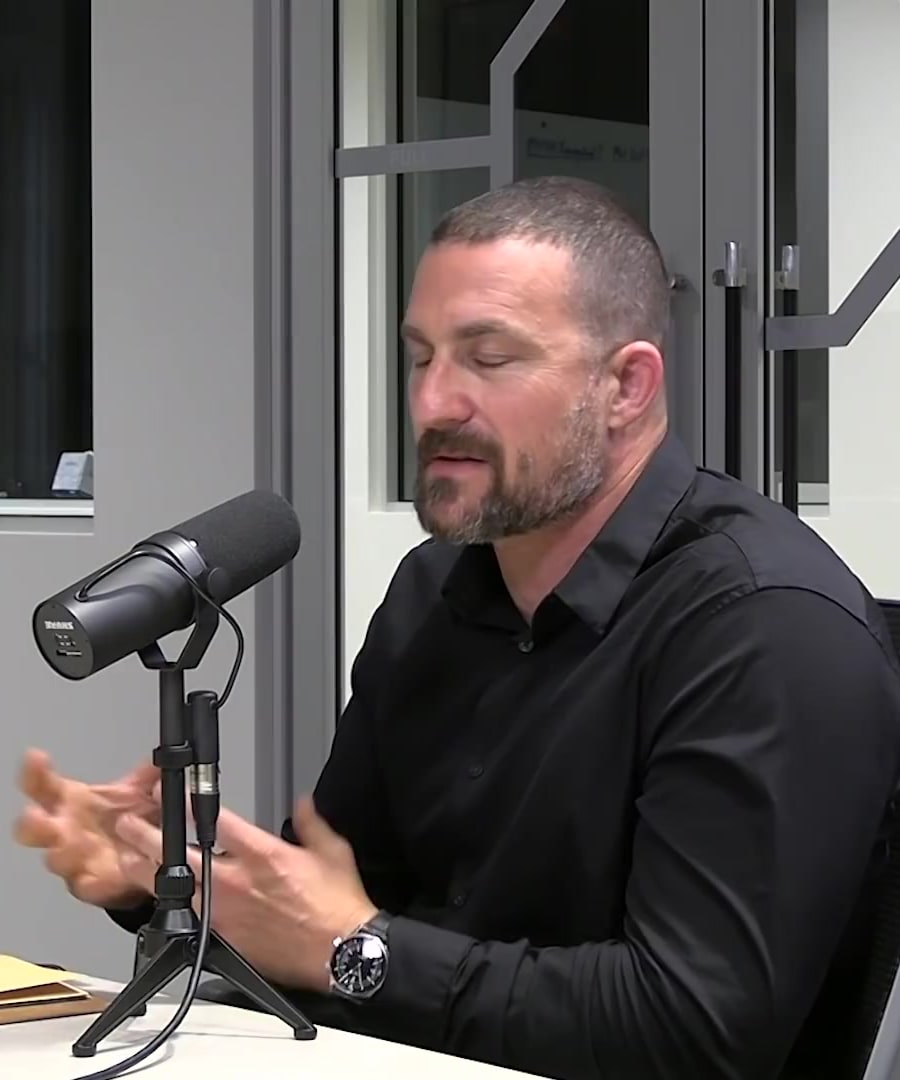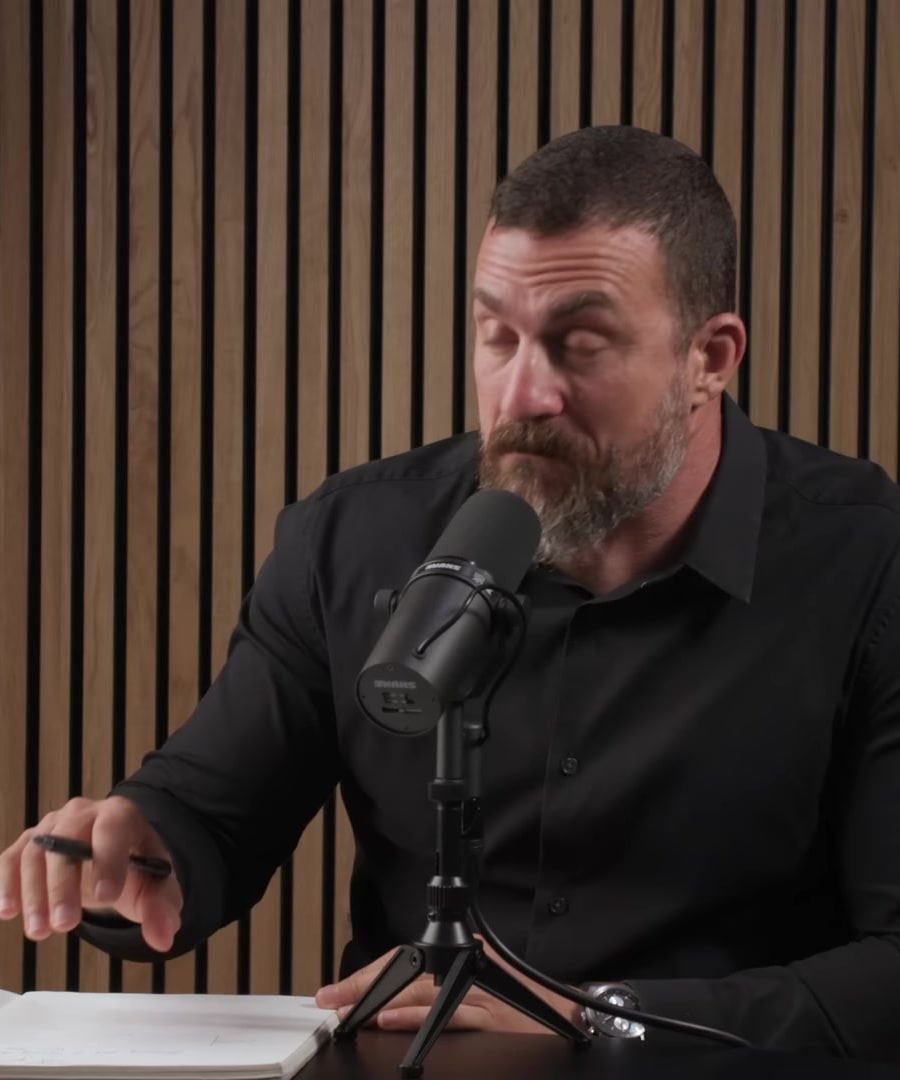boxing
The , hosted by , covers a wide range of topics related to neuroscience and mental and physical health. However, there is no specific mention of boxing as a focused topic within the available episode descriptions. If you are interested in the neuroscience aspects of sports, such as performance, motivation, or fitness, this podcast might still be quite relevant. Could you specify if you are looking for information related to the sport of boxing or its aspects like training, mental focus, or benefits? This will help in providing more targeted information.
RELATED QUESTIONSTell me more about boxing training techniques.
Sources:
Boxing training, as discussed by guests on the , incorporates a blend of both anaerobic and aerobic capacities, given the unique demands of the sport. Specifically, Dr. Andy Galpin outlines the structure typical of boxing rounds—continuous bursts of intense physical activity followed by short recovery periods, emphasizing the need for combined anaerobic (high-intensity) and aerobic (endurance-based) training 1.
Additionally, the intense regimen followed by professional boxer Floyd Mayweather provides a practical example of high-tier boxing training. Mayweather's routine included prolonged sparring sessions with fresh partners and minimal rest, combined with multiple running sessions within a 24-hour period, showcasing an extremely intense approach to training that gears towards maximizing both physiological and psychological readiness for the ring 2.
For further enhancement of performance, consideration of nervous system function as it relates to muscle contraction and stretching can also be beneficial. Methods such as "relaxing into the stretch" for muscle relaxation and "irradiation," which involves tensing certain muscle groupings to aid in muscle contraction during exercises, can also be pivotal in optimizing boxer training effectiveness 3.
RELATED QUESTIONSAre there any resources for boxing training you can recommend?
The does not specifically mention any resources for boxing training. However, for those interested in exploring this topic, I recommend looking for books, websites, and online courses that are targeted specifically towards boxing training. Additionally, training videos and tutorials by reputable coaches and professional boxers can be valuable resources to learn proper techniques and training regimens.
RELATED QUESTIONSWhat are the health benefits of boxing?
Sources:
Boxing offers several health benefits, as discussed indirectly in terms of general exercise benefits on the :
- Cardiovascular Fitness: Regular boxing training improves heart health and increases lung capacity.
- Muscle Strength: It involves the entire body, enhancing the strength of upper body, lower body, and core muscles.
- Coordination and Balance: The sport requires good hand-eye coordination and stability, which naturally improves with practice.
- Stress Relief: Physical activity like boxing can help in reducing stress and improve overall mental health.
- Improved Body Composition: Regular practice can help in reducing body fat and increasing muscle mass, leading to better overall physical condition.
These principles align with the discussions on how various forms of physical exercises, including cardiovascular and strength training, contribute significantly to physical health and injury prevention 1. Always ensure proper technique and safety measures to prevent potential injuries such as head impacts, which were highlighted in discussions on sport-related injuries 2.
RELATED QUESTIONSCan you tell me more about the health benefits of boxing?
Sources:
Boxing offers several health benefits beyond the basic fitness improvements mentioned previously. Here are additional insights from the on how boxing specifically can promote mental and physical well-being:
-
Physical Health: Boxing is a comprehensive workout involving cardiovascular, strength, flexibility, and mobility training. It effectively elevates heart rate and promotes physical health. This could translate into better endurance, stronger cardiovascular health, increased flexibility, and greater resistance to injury 1.
-
Mental Health: The discipline of boxing requires intense focus and mental strategy, which can significantly sharpen cognitive abilities. Engaging in boxing can also aid in the control of stress and anxiety, contributing to better mental resilience.
-
Brain Health: An important cautionary note discussed is the need to avoid head impacts. Though boxing can be associated with head injuries, being mindful of this risk can help retain the sport's benefits while minimizing harm. Proper technique and protective gear are crucial 2.
In summary, boxing can serve as a valuable physical and mental exercise, provided safety measures against head injuries are strictly observed.
RELATED QUESTIONS-
What are some more detailed benefits of boxing?
There are no specific clips that cover detailed benefits of boxing in the data. For comprehensive insights on such topics, you might consider looking out for episodes that focus on overall physical activities and mental health, as boxing-related benefits often correlate with general fitness and cognitive performance improvements discussed in broader terms.
RELATED QUESTIONSHow does boxing improve mental health?
The does not provide specific information on how boxing improves mental health. For insights related to exercise and mental health more broadly, you could explore episodes that address physical activity and its effects on brain function and emotional well-being. These episodes typically cover how regular exercise can enhance mood, decrease anxiety, and improve cognitive functions, which are also relevant to the mental benefits of boxing.
RELATED QUESTIONSExplain the neuroscience behind athletic performance.
Sources:
The neuroscience behind athletic performance integrates various biological and psychological factors. Here's a summary of the key insights from the on this topic:
-
Exercise Physiology and Applied Training: Dr. Duncan French emphasizes the role of exercise physiology in improving athletic performance. Having a deep understanding of how our bodies respond to different training protocols allows for optimizations tailored to individual athletes. It's not just about physical abilities but also about understanding the science behind it, which enhances performance in both competitive and training environments 1.
-
Mental Fatigue and Recovery: Intense physical activity can lead to mental fatigue, which impacts cognitive functions post-exercise. Discussing potential causes, the depletion of neurotransmitters like dopamine during intense training sessions may contribute to this mental fatigue. Additionally, the discussion highlights the importance of nutrition, emphasizing that the brain requires proper fueling after intensive cognitive and physical activities to recover and perform optimally 2.
-
Thermoregulation: Dr. Craig Heller discusses thermoregulation, explaining how the ability to control one's body temperature can significantly enhance athletic performance. Proper management of body heat not only improves physical performance but also supports cognitive functions during sports activities 3.
-
Brain-Body Relationship: Physical activities, especially those involving load-bearing exercises, prompt the release of osteocalcin from bones. This process is crucial as it signals the brain about physical activity, which in turn helps in maintaining and updating neural circuitry crucial for both physical and cognitive activities. This bi-directional relationship between brain activities and physical movements underscores the importance of regular physical activity for cognitive health 4.
Understanding these aspects provides a comprehensive look at how neuroscience can be applied to optimize and understand athletic performance further.
RELATED QUESTIONS-
Tell me more about exercise physiology and training protocols for athletes.
Sources:
discusses in-depth exercise physiology and training protocols suitable for various fitness goals. He explains the importance of adapting these protocols to individual needs and provides insights on how to incorporate different types of training into a fitness routine effectively. Here are some key points covered:
-
Foundation of Fitness Programs: A downloadable PDF provides a foundational fitness program detailing examples of cardiovascular and resistance training sessions. It explains the rationale behind choosing specific exercises, repetition ranges, and rest periods between sets. This template helps evaluate or modify existing fitness programs or start new ones 1.
-
Diverse Training Modalities: The podcast discusses training modalities like strength, speed, power, hypertrophy (muscle growth), and various forms of endurance (e.g., muscular, anaerobic, and long-duration endurance). Understanding these categories helps tailor a fitness protocol that aligns with specific fitness or performance goals 2.
-
Importance of Incremental Training Age: The discussion with highlights the significance of training age and history in determining the intensity and frequency of workouts. For example, more intensive workouts might be limited to twice a week depending on the individual's resilience and training history 3.
-
Exercise Science and Testing: discusses different tests to determine fitness levels in various categories and protocols to improve them. This personalized approach allows individuals to identify their strengths and areas for improvement, ensuring the efficiency of exercise routines 4.
These insights reveal the depth of exercise physiology in enhancing athletic performance and overall fitness through scientifically supported tools and personalized training protocols.
RELATED QUESTIONS-
training modalities
Sources:
Training modalities in exercise encompass various methods targeted at different fitness goals, ranging from strength and muscle building to boosting endurance. Here are some specifics discussed on the :
-
High-Intensity and Strength Training: High-intensity workouts, including weight training, can efficiently tap into body glycogen stores. This is an effective way to burn fat, provided the training is combined correctly, such as doing cardio after weight training. Additionally, types of training like strength training may not be the most energy-intensive, but they include low-volume, high-intensity work ideal for specific strength gains 1.
-
Eccentric Overload Training: This advanced strength training method involves loading greater than 100% of one-repetition maximum but performing only the lowering (eccentric) phase. It’s especially powerful for building strength because muscles can handle more weight eccentrically than concentrically. This practice can be more effective for strength development than conventional methods 2.
-
Stretching and Flexibility: Different stretching intensities impact the body uniquely. Low-intensity stretching, over time, has been demonstrated to enhance range of motion more effectively than moderate-intensity static stretching. This approach is suitable for improving flexibility without straining muscles 3.
These modalities and insights emphasize the necessity of selecting appropriate exercise methods based on personal fitness goals, capabilities, and the specific training outcomes desired.
RELATED QUESTIONS-
periodization
Sources:
Periodization in exercise training is a systematic approach to vary training intensity and volume over specific periods to maximize gains and minimize risks of overtraining. Andy Galpin discussed two popular periodization methods on the :
-
Linear Periodization: This method focuses on training one specific adaptation at a time. For example, you might spend several weeks focusing solely on strength, hypertrophy, or endurance, without mixing them. This method is beneficial for achieving significant gains in a specific area, as it avoids interference from other types of training. However, the downside is the potential loss of other physical adaptations during the focused training period 1.
-
Undulating Periodization (Daily or Weekly): This form involves mixing different types of training either within the same week or even the same day. For instance, you could have a schedule where Monday is for power, Wednesday for strength, and Friday for hypertrophy, or vary the emphasis daily within all sessions. This method helps maintain various physical adaptations but may dilute the focus compared to linear periodization. Both methods have been shown to be effective, though the choice between them depends on specific training goals 1.
The effectiveness of periodization strategies can often seem similar, and the choice largely depends on the specific fitness goals of the individual and the desired focus of the training cycle.
RELATED QUESTIONS-
sleep
Sources:
Sleep is a complex and vital aspect of health, extensively discussed in various episodes of the . Here are some key insights into the functions and importance of sleep:
-
Memory and Learning:
- Sleep is integral to memory consolidation and learning. It enhances the ability to remember and integrate new information by interconnecting and updating memory back catalogs, enabling creative problem-solving 1.
- Before a learning session, obtaining good sleep is essential to prepare the brain for effective learning. Post-learning sleep is crucial to solidify the knowledge gained 2.
-
Emotional and Mental Health:
-
Sleep Disorders and Solutions:
- Sleep apnea, a common disorder, can lead to severe health problems. Options to manage it include using a CPAP device or practicing nasal breathing. Mouth taping at night to encourage nasal breathing is a non-invasive remedy that has been discussed 4.
-
Sleep Structure and Circadian Rhythms:
- Understanding the structure of sleep cycles, including the alternation between REM and non-REM sleep, is crucial. The timing of these cycles impacts overall health and daily functioning 5.
- The timing and intensity of exercise and caffeine consumption can affect sleep quality. Strategies to optimize sleep include managing these factors effectively 6.
These insights illustrate the multifaceted role of sleep in ensuring physical, cognitive, and emotional health.
RELATED QUESTIONS-
boxing
- RELATED QUESTIONS
Tell me more about boxing training techniques.
- RELATED QUESTIONS
Are there any resources for boxing training you can recommend?
- RELATED QUESTIONS
What are the health benefits of boxing?
- RELATED QUESTIONS
Can you tell me more about the health benefits of boxing?
- RELATED QUESTIONS
What are some more detailed benefits of boxing?
- RELATED QUESTIONS
How does boxing improve mental health?
- RELATED QUESTIONS
Explain the neuroscience behind athletic performance.
- RELATED QUESTIONS
Tell me more about exercise physiology and training protocols for athletes.
- RELATED QUESTIONS
training modalities
- RELATED QUESTIONS
periodization
- RELATED QUESTIONS
sleep
- RELATED QUESTIONS



